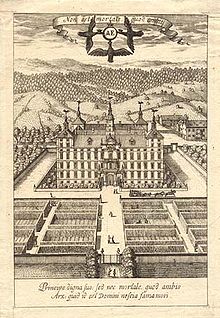
UNESCO has added 21 new sites to the list
 |
| Eggenberg Castle, Graz |
UNESCO decided at its session from July 25 to today in the Brazilian capital to add a total of 15 sites from the cultural category, five from the natural category, and one site that falls into both groups.
Three countries, Kiribati (Phoenix Islands Protected Area), the Marshall Islands (Bikini Atoll), and Tajikistan (archaeological site of Sarazm), have appeared on the list for the very first time this year.
Among the new sites added to the list are, in addition to the 14-kilometer-long Amsterdam Canals, established in the 16th and 17th centuries, historical monuments in Chinese Tengfeng, the episcopal city of Albi in France, the Pacific Bikini Atoll, where nuclear test detonations were conducted, and the Papahanaumokuakea Marine National Monument around the Hawaiian Islands.
The Baroque Eggenberg Castle was built in 1625 according to the Italian architect Pietro de Pomis as the residence of the imperial governor Hans Ulrich von Eggenberg. It holds great artistic value mainly due to the enormous cycle of more than 500 ceiling paintings, which testify to the worldview of the early Baroque period.
From Romania, the Sucevita Monastery became the eighth monastery from the historical region of Moldavia in Eastern Romania to be added to the list. Like other monasteries in the region, Sucevita is characterized by its colorful paintings on the outer walls dating back to the 16th century.
The World Heritage List was also expanded to include 645 prehistoric images carved into rocks in Siega Verde in the western Spanish autonomous region of Castile and León. In this case, it is also an expansion of an already existing entry – the Portuguese Coa Valley.
"The prehistoric art sites in the Coa Valley and Siega Verde represent the most remarkable complexes of Paleolithic open-air art on the Iberian Peninsula," UNESCO justified its choice.
The World Heritage List has thus expanded to a total of 911 sites distinguished by their unique natural or cultural significance.
An entry on the UNESCO list is always an important economic signal, especially for developing countries. In most cases, after a site is listed, there is an increase in tourist visits; applications for financial aid and investments are also facilitated.
However, UNESCO also monitors construction and other interventions in the sites that might lead to their removal from the list.
Among the most famous Czech monuments on the UNESCO list are the historic cores of Prague, Český Krumlov, and Telč. The Czech Republic has a total of 12 monuments on the list.
A total of 39 sites have been nominated for inclusion on the UNESCO list.
The English translation is powered by AI tool. Switch to Czech to view the original text source.
0 comments
add comment










